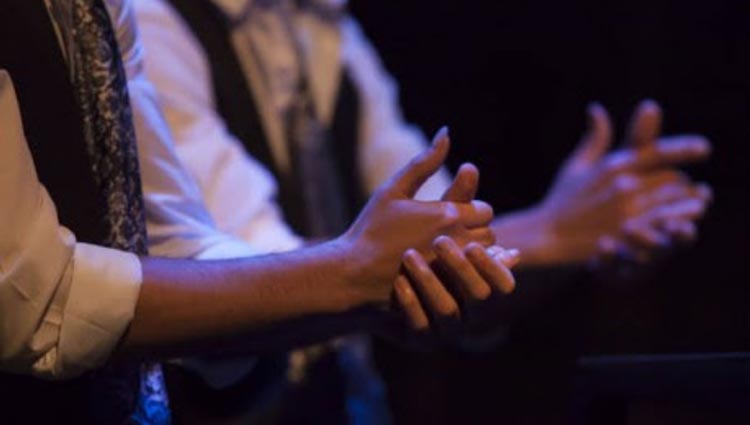Palmas is the captivating traditional hand clap percussion used in Spanish flamenco music. In addition, palmas are also used in other folk music traditions throughout Spain and Hispanic American countries.
In order to get the best results, flamenco palmas should be performed by at least two people, playing two patterns at the same time. One musician usually player lays the foundation while the other provides the conclusion, variations and counterpoints.
Palmas are widely used and played in southern Spain, specially in Jerez, although professional flamenco artists routinely use expert palmeros (palmas players) who can play complex rhythms used in the various flamenco subgenres known as palos. Some of the finest palmeros in recent history include El Bobote, El Eléctrico, Manuel Soto Barea ‘El Bo’, Gregorio, Chicharo, Rafael el del taxi, José Peña, José Rubichi, Ali de la Tota, Gregorio Fernández and Rafael Romero.
Currently, two of the most sought out palmeros are twin brothers Manuel and Antonio Montes Saavedra (Huelva) who are known as Los Mellis de Huelva.
Guitarist and educator Jerónimo Utrilla is also an expert palmero. Indeed, he developed a palmas training DVD called ‘Aprende y practica las palmas.’
Interestingly, many famous singers, dancers and musicians are also expert palmeros. For example, José Mercé, Moraíto, Fernando de la Morena, Lebrijano, el Funi, Curro Malena and Manuela Carrasco.
Not all flamenco palos feature palmas. The palmas are used fundamentally in the celebratory palos such as bulerías, tangos, tanguillos, cantiñas, rumbas, sevillanas and fandangos de Huelva.
(headline image: Palmeros during Laura Vidal’s performance at the third edition of FlamencoEñe showcase – Photo by Jesús Domínguez)


